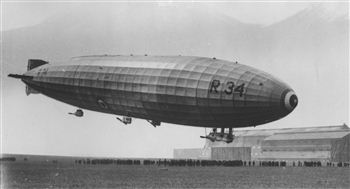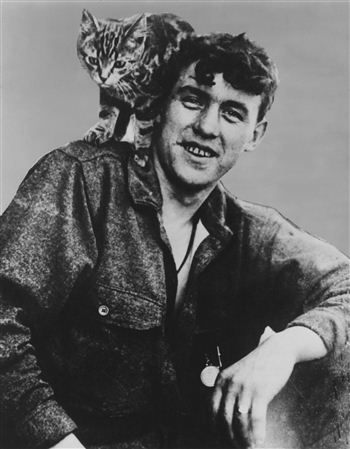
By Cara Sulieman
RESIDENTS of a tiny town in America have been invited to Scotland to mark the 90th anniversary of the first return flight across the Atlantic.
The giant Glasgow-built R34 airship set off from East Fortune in East Lothian bound for Mineola on Long Island on July 2 1919.
And the National Museum of Flight, which is based at the East Fortune site, have waived the admission fee for any of the 19,000 residents of the US town.
The airship’s flight was an adventurous and exciting event and hit the headlines on both sides of the Atlantic.
6,000 mile trip
It had only been a few weeks since Alcock and Brown’s record-breaking flight in a plane across from America, and the world was gripped with flying fever.
Not only was it the first return journey to be attempted by air, but the first time an aircraft had started the 6,000 mile trip from the East side of the ocean.
The airship, nicknamed Tiny, finally reached Mineola after 108 hours and 12 minutes after an arduous journey.
The 30 crew members required 4,900 gallons of petrol, 230 gallons of oil, three tons of water for ballast and almost a ton of food to sustain them across the Atlantic.
Stowaways
They piled into the 643 foot long ship that was kept afloat by 1,950,000 cubic feet of hydrogen gas, which was held in 19 gas bags.
In order to power the ship, five 250 horse power V12 engines were installed – one at the front, two half way down, and two at the back.
But despite the remarkable achievement of the crew and the majesty of the aircraft, it was the story of two stowaways that captured the public’s imagination.
William Ballantyne and Wopsie the cat both sneaked on to the airship separately – Ballantyne by himself and Wopsie with the help of a crew member.

The kitten had been taken on to the ship by LAC Graham, making it the first feline to fly across the Atlantic.
William Ballantyne had originally been a part of the crew but had been bumped off when it was decided there were too many people on board.
Three of them got pulled off, but Ballantyne was determined to make it to America.
He told the New York Times on July 7 1919: “I’d worked hard, I had, blasted hard, on the bally blimp, but that didn’t matter so much.
“You see, I‘d never been to America, had my heart placed on it, and my mind, too. So I sneaks out a bit before midnight, about two hours before the R-254 left Scotland. I hides in the rigging. No-one saw me and we were off.”
Unusual cargo
But he was discovered before the blimp reached the States when he had to come out of hiding because he was ill.
His chosen hiding place was too close to fumes and he developed a fever of 102 F.
The stowaways weren’t the only unusual cargo on the airship.
R34 carried 112 pounds of post, including some pure platinum from bullion dealers Derby & Co and letters from King George V and the prime minister, David Lloyd George.
It was delivered by parachute near the town of Fortune in Newfoundland, Canada.
Chewing gum
A lot of things were learnt during the flight, and the crew had to use their imagination to fix the problems that arose.
If too many staff were in one area of the airship it was knocked off balance. When lunch was served, the crew had to eat in shifts or the blimp started to tilt forward.
And half way through the flight, a leak sprung from the engine.
In order to repair it, the crew had to stick a copper sheet over the hole with the ship’s entire supply of chewing gum, which was on board as a smoking substitute.
When the airship reached Mineola there were no experienced airship crew on the ground so Major Pritchard had to parachute down to instruct them in bringing in the blimp.
As a result he became the first man to reach the States by air.
“Major milestone”
When the R34 reached Mineola at 9.45am on July 6 1919 it had only completed half of the scheduled journey.
The second leg, back to Pulham in Norfolk, took only 75 hours three minutes thanks to strong tail winds.
Alastair Dodds, Principal Curator of Transport, National Museums Scotland said: “The flight of the R34 was a major milestone in aviation history and a real Scottish success story.
“The ship was built at Inchinnan near Glasgow and the trip aimed to test the possibilities of future air travel.
“We have a memorial to the flight at East Fortune and a replica exists in Mineola so we felt it was appropriate to revive the site’s links with this American town through our offer to its residents in this, Scotland’s Homecoming year.”
The story of the R-34 is told in the new Fortunes of War exhibition at the National Museum of Flight.

